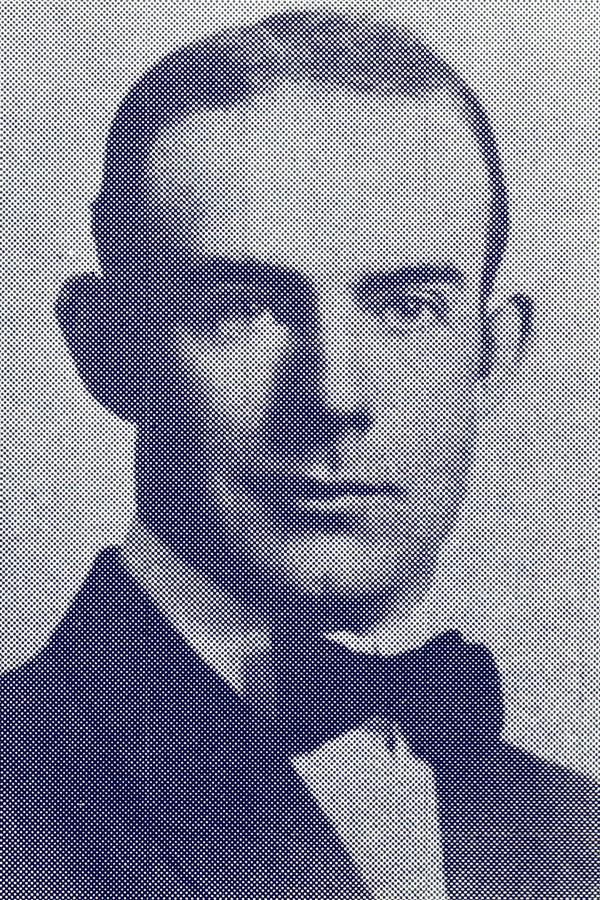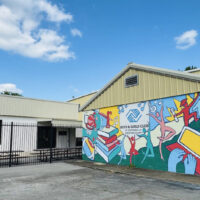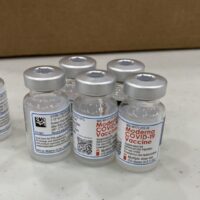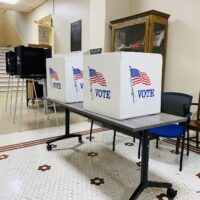Built on a thin wooden frame and woven with strings of animal hide, this pair of winter footwear measures 61 inches long and 11.5 inches wide at its widest. An area that attaches to the foot is 14.5 inches long, and one of these monsters still sports the leather strap that is tied around a shoe. The rounded toes tip up, giving 4 inches of clearance. A closer look reveals the exquisite craftsmanship. Function and artistry combine to create this pair of snowshoes.
This year, I plan to delve into the stories of 12 artifacts in the Pennyroyal Area Museum’s vast collection for a monthly column in Hoptown Chronicle. For almost half a century, the museum has worked to save and salvage physical pieces of this community’s history. Hundreds — if not thousands — of people have kindly donated precious (and occasionally bizarre) family heirlooms. Like most museums, we do not have the capacity to display all of the 12,000-plus items in our collection, so I thought I would pick some of my favorites to share. First up — snowshoes.

I remember gawking at these the first time I saw them. They are enormous! From tip to tip, they are more than 5 feet long. They’re almost as long as I am tall — which seems positively ridiculous to me. How on Earth could someone walk in these things? Who walked in them? Do they have a connection to Hopkinsville and Christian County, or are they just an oddity that found its way into our basement? How did they end up in our collection?
Donated in 1997, these snowshoes came to us from Adelaide Linton Cartier and belonged to her father Hugh Walter Linton Sr. The information she shared with us indicated that the snowshoes date to 1916-17. Come to find out, they most certainly came in handy at that time.
Before I get into that, I needed to know how snowshoes work. At first glance, they seem absolutely impossible to maneuver. The key to these contraptions is that their large footprint distributes the wearer’s weight over a greater area and allows one to walk — or glide almost like on skis — over the snow. Just last week, I took a trip to Colorado and found myself plummeting through snow up to my hips. My tiny feet were like spikes driving straight through lesser-packed powder. All of a sudden, these long snowshoes made a lot of sense.
A little digging around on Google brought up images of loads of styles of snowshoes (or shoeskis, as they were also known) designed and used by varying cultures since at least 4000 BC. It appears that our example is most similar to an Athabascan snowshoe used by the Dena’ina people in Alaska. Yes. The local history museum in Hopkinsville has a pair of handmade Alaskan snowshoes.

I don’t know how Hugh W. Linton Sr., the original owner, obtained these beauties, but the fact that he had them by the winter of 1917 hints at a bigger story. The winter that followed is widely described as one of the most brutal that our region has ever experienced. The National Weather Service describes December 1917 and January 1918 as the coldest and snowiest ever on record for this area. In those two months, Christian County was blanketed under a total of 45.5 inches of snow. That’s almost four feet! To put that in perspective, that snow would be up to my armpits.
And while that amount of snow didn’t all fall during one Western Kentucky blizzard, it did stay mainly on the ground from December until almost spring. The extremely cold temperatures kept snow from melting, so it just kept piling up. Not to mention the snowdrifts. By and large, Hopkinsville was completely isolated.
Lucky for us, we have another artifact in our collection that provides more insight into the long, tough winter. Robert H. “Bob” McGaughey, former journalist and banker, put together a resource titled “This Is Your Weather” that chronicles the weather, listing the high and low of every day, and highlighting major weather events from 1960 through the late 1990s. Using diaries kept by his father and grandfather who both farmed out near Newstead, he also included firsthand accounts of memorable storms and floods from the late 19th and early 20th century.
Here are a few highlights from R.H. McGaughey’s 1917-1918 diary:
- December 10 [1917]: The thermometer ranged from 10-15 degrees below zero this morning all over the county … No work done on the farm except feeding of livestock.
- December 31: After feeding the livestock we got our force and filled ice house. Ice was a little over four inches thick and was nice new ice mostly, while most of the pond still had the old ice on it from the first spell. The former ice spell was seven inches thick.
- January 2, 1918: Weather quite cold today with a blizzard most of the forenoon.
- January 12: A very cold snap came yesterday. Thermometer down to 14 degrees below zero this morning … Another record broken when the thermometer never got higher than 2 degrees below zero even with the sun shining.
- January 18: No change in the cold weather, only turning colder in the afternoon. The roads to town are blocked from snow drifts. I went to Hopkinsville by train today.
- January 19: Thermometer near zero again. The weather is getting more serious. No business on farm attempted.
McGaughey also talks of looking after the furnace at the Newstead school, of hog killings, and of cleaning up a wreck of the L&N train on his farm due to ice forming between the planks and rails of the track. By February 23, he was steaming tobacco plant beds and had planted one field of corn by March 20. Snow and ice melt, and life goes on.
The owner of our snowshoes endured this same blustery, miserably cold winter in the confines of Hopkinsville. Born in Logan County in 1883, Hugh W. Linton moved to Hopkinsville via Elkton and was admitted to the bar here in 1907. The young attorney married Lydabel Garnett in 1913, and by the winter in question, the couple and the first two of their three children (ages 2 and 6 months) lived in a frame house on South Walnut Street just past old Hopkinsville High School and Central Avenue. Linton worked as a lawyer and kept an office on South Main Street just north of old Planters Bank and near the corner of Eighth Street.
Picture that. A man, about 34 years old, floating his way on top of more than 40 inches of snow as he traverses up Walnut Street, to Ninth, down to Main Street, and up to his office, wearing these snowshoes. And then, almost 80 years later, those same snowshoes made their way back to Ninth Street and into the collection of the Pennyroyal Area Museum.
That’s one of the things I love most about local history and about small museums — the cycle that brings interesting items back so that we can share the bigger stories that strike at the heart of who we are. These snowshoes show how our community was resilient and made it through this “disastrous spell of weather,” as it was described in the Hopkinsville Kentuckian newspaper. They show how we seek out resources for aid in times of crisis and how we rely on ingenuity to keep us going. These snowshoes connect us to other (colder) cultures and show how far our reach into the world can be. And coupled with our copy of “This Is Your Weather,” they tell a story of survival and grit and coming together of which we should all be proud.
The snowshoes and other winter wear will be on display for the next few weeks at the Pennyroyal Area Museum if you’d like to take a closer look. They’re worth it!
The museum, at 217 E. Ninth St., is open 10 a.m. to 4 p.m. Tuesday through Saturday.
Alissa Keller is the executive director of the Museums of Historic Hopkinsville-Christian County. She’s a graduate of Centre College with degrees in history and English and of Clemson University/College of Charleston with a master’s degree in historic preservation. She serves on the Kentucky Historical Society and the Kentucky Museum and Heritage Alliance boards.





